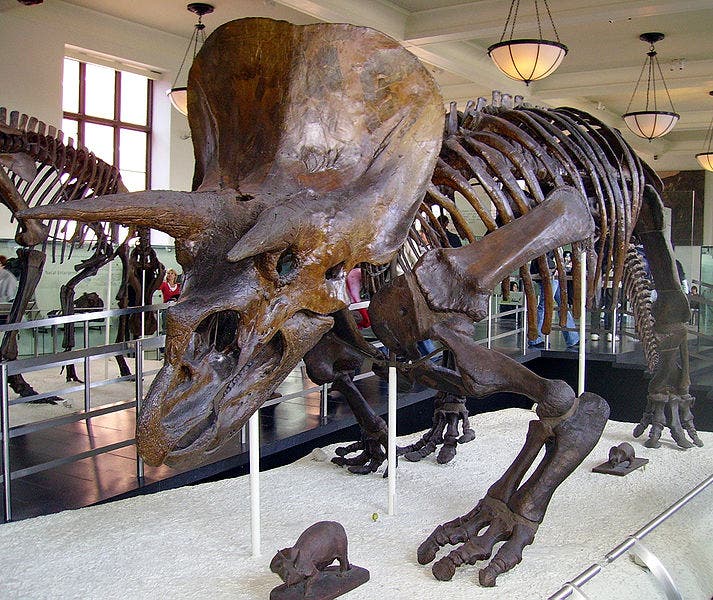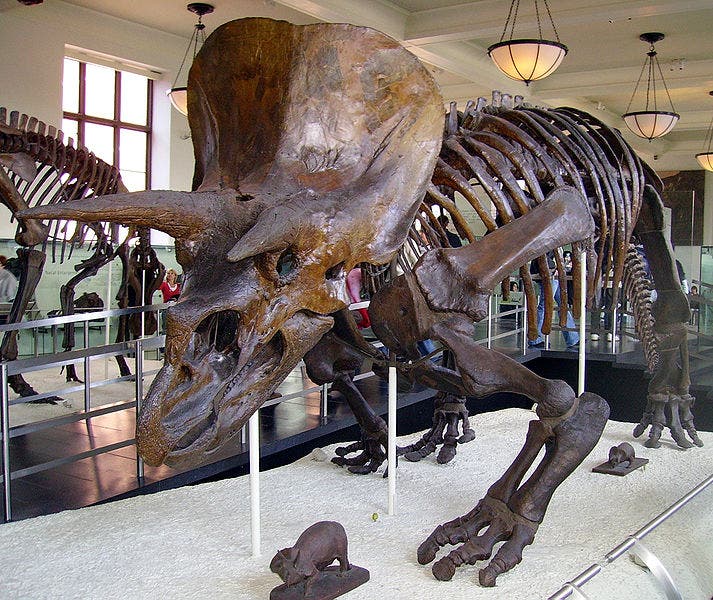Paleontologists have unearthed in Montana the fossilized bone of a the last known dinosaur so far, dating back from 65.5 million years ago. The finding carries a big weight in supporting the currently leading asteroid impact dinosaur extinction theory.

What paleontologists found was actually the horn of a thought to be triceratops in a sediment bank while hunting for fossils the Hell Creek Formation, a 100m-thick slab of mudstone in south eastern Montana. The region is famous for fossil findings which range from both before and after the extinction period. Other dinosaur fossils found up to now were either much older, or were unearthed after being washed from their original graves into much younger sediments, long after they died.
Although the theory of an asteroid hitting the Yucatan peninsula around 65 million years ago has been so far regarded as the most plausible one by the scientific community, little evidence has been found up until now, apart from the giant crater itself whose date perfectly corresponds with the dinosaur extinction period. The 18-inch-long horn, however, was found and dated 5 inches below the K-T boundary, the geological line in sedimentary rock that signifies the impact of the asteroid. The latest fossil was discovered a mere 13cm below that line.
This suggests that the dinosaur—and, likely, other dinosaurs—may have been alive shortly before the asteroid hit. Other finds from recent years uncovered fossils and even T. rex footprints in the timeline extinction gap, some less than a foot below the K-T boundary, but none have narrowed the gap as much as this discovery has.
“This demonstrates that dinosaurs did not go extinct prior to the impact and that at least some dinosaurs were doing very well right up until we had the impact,” paleontology grad student Tyler Lyson, the study’s lead author, told the Guardian.
Scientists warn however that this leading has come from only one bone and further research and uncovering must be made before a sturdy conclusion can be formulated. Some researchers suspect more such fossils are waiting to be found.









